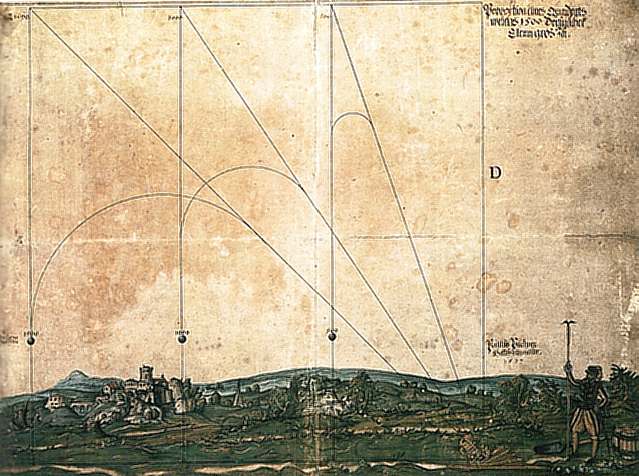
This is a medieval drawing of Aristotle's ideas about trajectories.
At my university, ancient philosophy is revered. In part, it comes out of the Neo-scholastic movement that honors the continuum of venerable philosophy in the West, a tradition of reverence to the Fathers of our knowledge. Oddly enough, I'm in a metaphysics class right now, at the same time as a modern physics class. We're reading Aristotle's Physics, which deals with his ideas on natural things and motion. He was such a brilliant man. I think even modern physicists admire the way he sat down and tried to figure out why things happen: he really was a scientist, and he tried to discover the laws of nature.
Aristotle's view of all things happening because of certain causes (aitia) is very good; he says that "Nature us a source (arche) or cause (aitia) of being moved or being at rest to which it belongs primarily" Bk2, Ch1, 192bln22. But, applied to stones falling, this might make you think that a rock was falling to the earth because that is it's natural place, according to the final cause. That's just not so. It's gravity. Thanks, Newton. If you hadn't come along and suggested otherwise, I might have gone along believing the causal definitions of physics!
Unfortunately for the ancient world, he missed his mark when it comes to the laws of motion. Thanks to Newton, modern people can enjoy a few corrections. One of these regards falling bodies. Aristotle wrote, "The heavier a body, the faster it falls." Well, did you actually try that one out, Aristotle? I think one of the reasons he didn't ----- and this is just *my* theory ----- was that he valued intellect as higher than material things. As such, he would do better to have reasoned through it than to condescend to consult matter. Perhaps?
Either way, if you drop a ball of lead and a ball of wood, they will both hit the ground at the same time. Now, as embarrassing as this may seem, I actually... I was actually carrying around the Aristotelian idea! Ok, ok, I know I must have been told a couple times in school that that isn't the case, but it just "seems" right, doesn't it? I think it may have to do with many visions of falling bodies interacting with air resistance: feathers, leaves, paper?
Here's one to remember: All bodies in a vaccum fall at the same constant acceleration.



No comments:
Post a Comment